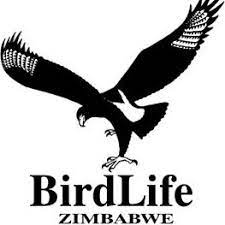CONSERVATION
Wetlands
Harare’s wetlands play a very vital role in providing the city with water. Harare’s on-going water supply catastrophe is being made worse by the destruction of its primary water source, the vleis or wetlands.
Ramsar Convention on Wetlands NEWS: Experts issue recommendations to save Zimbabwe’s wetlands
Facts you should know:
- Harare’s major water source originates from the vleis and open green spaces within and surrounding the city. Many are now being sacrificed to development, being polluted by waste and being degraded by informal urban agriculture.
- A vlei is an important type of wetland typical of the Mashonaland Plateau. It is low-lying, marshy wet grassland, covered with water during the rainy season, and even though it may seem to be dry during the winter season and droughts, it is actually storing water under the ground which it releases slowly into the streams and rivers – a natural regulator. A vlei ecosystem can be kilometres wide in extent with the drier fringes moving down to the wetter mid and central areas. All areas have an essential role to play in the provision of water.
- Greater Harare and its environs sit in the headwaters of the Manyame and Gwebi catchment basin. Approximately 6.5 million people rely on this invisible source for their water supply. There is no higher place a from where Harare can source its water. Many people are unaware that Lakes Chivero and Manyame are downstream of Harare and that this lake water needs to be pumped back up to Harare!
Harare’s vleis and open grasslands provide numerous services, cost-free, for its residents:
- Recharging of rivers, headwaters and aquifers of the Mashonaland watershed (Headwaters and aquifers contain 97% of the Earth’s unfrozen fresh water)
- Highly effective filtration of this recharged groundwater – a task which would otherwise fall to the city’s over-extended and very expensive treatment works.
- Are a more efficient carbon sink than forests (carbon dioxide accounts for at least 60% of the effects of global warming).
- Control of groundwater flow, which prevents river siltation and land erosion, as well as depositing nutrients to maintain wetland biodiversity.
- Flood attenuation.
BirdLife Zimbabwe’s role in the conservation the wetlands of Harare:
- Education: BLZ ‘s Bird Awareness Programme has been introduced into schools and colleges located near wetlands.
- Community Engagement: together with local communities, Environmental Management Agency, City of Harare and other stakeholders, BLZ has been involved in the conservation of Monavale Vlei and currently Marlborough Vlei.
- Bird Watching: BLZ members visit Harare’s wetlands throughout the wet season to monitor the important breeding migrant species such as Striped Crake and Streaky-breasted Flufftail. A monthly survey is conducted on Monavale Vlei with COSMO members.
- World Wetland Day 2015 “Wetlands for our Future: Enticing Youth to Experience Wetlands for Themselves” for schools was celebrated on Monavale Vlei, Harare on Friday 6th February.
BirdLife Zimbabwe would like to thank Cosmo for their contribution to this page.
For infomation on the flora of Monavale Vlei, click on link below:
http://zimbabweflora.co.zw/speciesdata/location-display.php?location_id=77
What constitutes a wetland?
Zimbabwe has recently become a contracting party to the Ramsar Convention. The Ramsar defines a wetland as “areas of marsh, fen, peatland to water, whether natural or artificial, permanent or temporary, with water that is status of flowing, fresh, brackish or salty…”
In North America the US Fish and Wildlife Service considers wetlands as “lands transitional between terrestrial and aquatic systems where the water table is usually at or near the surface or the land is covered by shallow water.” (Breen et al. 1997)
The South African Department of Environmental Affairs defines this, inter alia, as follows: “Marshes. bogs, swamps, vleis and sponges are examples of wetlands.”
More Information
Draft Harare Wetlands Map_Feb 2020 (PDF)
HWT Comments on Zimbabwe Wetlands Policy (PDF)
Status of Harare Wetlands (PDF)
Submissions from Zimbabwe NGOs and Residents to EMA (PDF)
Wetland Development Responses (PDF)
Wetland Management Guidelines Harare Wetland Trust submission July 2020 (PDF)
DOWNLOAD
Image credits: Monavale Vlei by David Hartung
